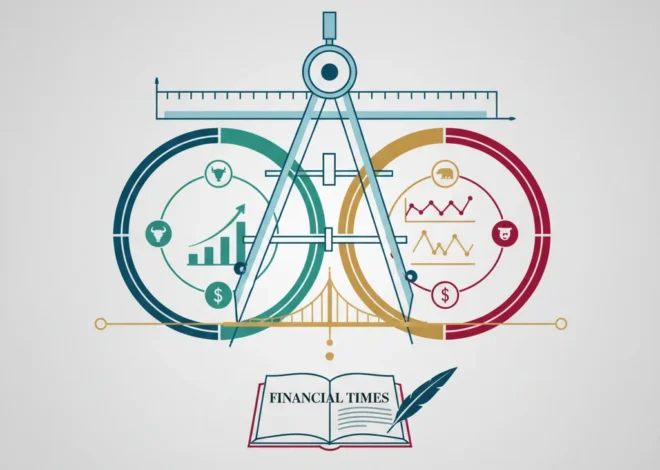
Wall Street’s Roaring Comeback: Inside Morgan Stanley and BofA’s Blockbuster Earnings
The silence that had settled over Wall Street’s deal-making floors for the past two years has been shattered. In a resounding statement of revival, financial titans Morgan Stanley and Bank of America have unveiled first-quarter earnings that didn’t just meet expectations—they smashed them. This powerful performance, driven by a dramatic resurgence in core investment banking activities, signals a potential turning point not just for the financial sector, but for the broader global economy.
For months, the narrative has been one of caution. High interest rates, geopolitical uncertainty, and fears of a recession created a deep freeze in the markets for mergers and acquisitions (M&A) and initial public offerings (IPOs). Companies were hesitant to make big moves, and the advisory and underwriting fees that fuel Wall Street’s biggest banks dried up. But the latest results suggest the thaw is well underway, revealing a landscape of pent-up demand and renewed corporate confidence.
This isn’t just a story about numbers on a balance sheet; it’s a barometer of economic sentiment. When companies are actively buying, selling, and going public, it reflects a fundamental belief in future growth. In this analysis, we’ll dive deep into the stellar results from Morgan Stanley and Bank of America, explore the macroeconomic forces driving this revival, and discuss what this renewed vigor means for investors, business leaders, and the future of finance.
A Tale of Two Titans: Deconstructing the Q1 Surge
The first quarter of 2024 saw both Morgan Stanley and Bank of America deliver performances that sent a clear message to the market: investment banking is back. Let’s break down the headline figures that have captured the attention of the financial world.
Morgan Stanley, in particular, showcased the sheer power of its integrated model. The bank reported a 14% rise in net income to $3.4 billion, with revenues climbing to $15.1 billion. The star of the show was its investment banking division, where revenues soared by an impressive 16%. This was largely fueled by a resurgence in underwriting, as companies once again tapped the public markets for capital. The bank’s formidable wealth management arm, a consistent engine of stability, also contributed significantly, pulling in a record $7 billion in revenue.
Bank of America painted a similar, albeit slightly more nuanced, picture. While its net income saw a decline due to a one-off charge, its core operational performance was robust. The bank’s investment banking fees jumped an astounding 35% to $1.6 billion, blowing past analysts’ forecasts. This surge indicates that BofA’s strategic focus on its deal-making franchise is paying dividends. Furthermore, its sales and trading division outperformed expectations, particularly in equities, where revenue climbed 15% to $1.9 billion, showcasing its ability to capitalize on a more active stock market.
To put these results into perspective, here is a side-by-side comparison of key performance indicators for the quarter:
| Metric (Q1 2024) | Morgan Stanley | Bank of America |
|---|---|---|
| Total Revenue | $15.1 billion | $25.8 billion |
| Net Income | $3.4 billion | $6.7 billion |
| Investment Banking Revenue/Fees | $1.45 billion (+16% YoY) | $1.6 billion (+35% YoY) |
| Wealth Management Revenue | $7 billion (Record High) | $5.6 billion (Part of Global Wealth) |
| Equities Trading Revenue | $2.8 billion | $1.9 billion (+15% YoY) |
These figures highlight a clear trend: the high-margin, dynamic business of advising on deals and raising capital is once again becoming a primary growth driver for Wall Street.
Digital Decay & Economic Dilemmas: Navigating a Shifting Financial Landscape
The Drivers Behind the Deal-Making Renaissance
What changed to turn a two-year drought into a flood of activity? The revival isn’t the result of a single factor but a confluence of powerful economic and market forces.
- Stabilizing Interest Rate Environment: For the past two years, the Federal Reserve’s aggressive rate-hiking cycle created massive uncertainty. With the cost of capital unpredictable, CEOs were reluctant to sign off on multi-billion dollar deals. Now, with a general consensus that rates have peaked and cuts are on the horizon, companies have the clarity they need to model future costs and execute long-term strategic plans.
- A Resilient Economy and Buoyant Stock Market: Despite persistent recession fears, the US economy has remained remarkably resilient. Strong corporate earnings and a buoyant stock market have boosted valuations and, more importantly, confidence. Higher stock prices provide a valuable currency for M&A deals and create a more favorable environment for companies looking to go public.
- Pent-Up Demand: Strategic imperatives don’t disappear during a downturn; they simply get put on hold. Two years of inactivity have created a significant backlog of M&A deals and IPOs. Companies that needed to sell divisions, acquire competitors, or raise growth capital are now rushing to act, creating a surge of business for investment banks. According to the FT article, global M&A volumes rose 30% in the first quarter to $755.1 billion, a clear indicator of this trend.
The biggest differentiator for banks going forward will be their integration of financial technology (fintech). AI-driven analytics for deal sourcing, blockchain for secure transaction settlement, and advanced data modeling for valuation will separate the leaders from the laggards. The banks that thrive won’t just be the ones with the best connections, but the ones with the smartest tech. This is a structural shift in the finance industry, and these earnings are the first chapter in that new story. Investors should watch not just the deal volume, but the quality of the deals and the technological efficiency of the banks executing them.
Beyond Investment Banking: The Full Picture
While the investment banking rebound grabbed the headlines, the full story of these financial giants is more complex. The performance of their other divisions reveals the strategic diversity that helps them navigate different economic climates.
Morgan Stanley’s wealth management division remains the bedrock of its stability. This business is less cyclical than trading or deal-making, providing a consistent stream of fee-based revenue. The division’s success in attracting and retaining assets from high-net-worth individuals acts as a powerful counterbalance to market volatility. This dual-engine approach—the high-octane growth of investment banking paired with the steady reliability of wealth management—is central to Morgan Stanley’s strategy and a key reason for its strong overall performance.
For Bank of America, the story involves its massive consumer banking franchise. While this division provides immense scale, it has also faced headwinds from higher interest rates. The bank is still managing unrealized losses on its bond portfolio, a consequence of holding long-duration securities that lost value as rates rose. Furthermore, the need to pay customers higher rates on their deposits has squeezed its net interest income (NII)—the difference between what it earns on loans and pays on deposits. This highlights the complex balancing act that universal banks must perform, managing risks and opportunities across vastly different business segments.
The Pessimism Paradox: Why We Feel the Economy is Broken and AI Won't Be a Quick Fix
The Ripple Effect: What This Means for the Broader Market
The resurgence of Wall Street is more than an industry-specific event; it has wide-ranging implications for the entire financial ecosystem.
- For Investors: Strong bank earnings are often seen as a leading indicator of economic health. This renewed activity suggests that corporate America is optimistic, which could fuel further gains in the stock market. For those interested in investing in the financial sector, these results could signal an attractive entry point, as bank stocks may see renewed momentum after a period of underperformance.
- For Business Leaders: The reopening of the IPO and debt markets provides more avenues for raising capital. For companies planning for growth, expansion, or strategic acquisitions, the environment is now significantly more favorable. The increased M&A activity also means that both buyers and sellers will find a more liquid and receptive market for their strategic objectives.
- For the Economy: A fluid and active capital market is the lifeblood of a modern economy. Efficient allocation of capital through IPOs, debt issuance, and M&A helps innovative companies grow, creates jobs, and drives productivity. The revival of these activities is a profoundly positive sign for long-term economic dynamism and a key component of the study of economics.
Beyond the Bailout: Why a 4M Copper Deal Signals a New Era in Global Economics
Conclusion: A New Chapter for Wall Street
The blockbuster Q1 earnings from Morgan Stanley and Bank of America are a clear and powerful signal that the deep freeze on Wall Street is over. A confluence of stabilizing macroeconomic conditions, renewed corporate confidence, and significant pent-up demand has reignited the engines of investment banking. This revival is not just good news for the banks themselves; it’s a positive omen for the entire economic landscape, heralding a return to the strategic transactions that fuel growth and innovation.
However, the path forward will not be without challenges. Geopolitical risks remain, and the future path of inflation and interest rates is still a subject of debate. The banks that will continue to succeed will be those that can blend their traditional deal-making prowess with cutting-edge financial technology, while prudently managing risks across their diverse operations. For now, the message from Wall Street is one of confident optimism, and the market is listening intently.


